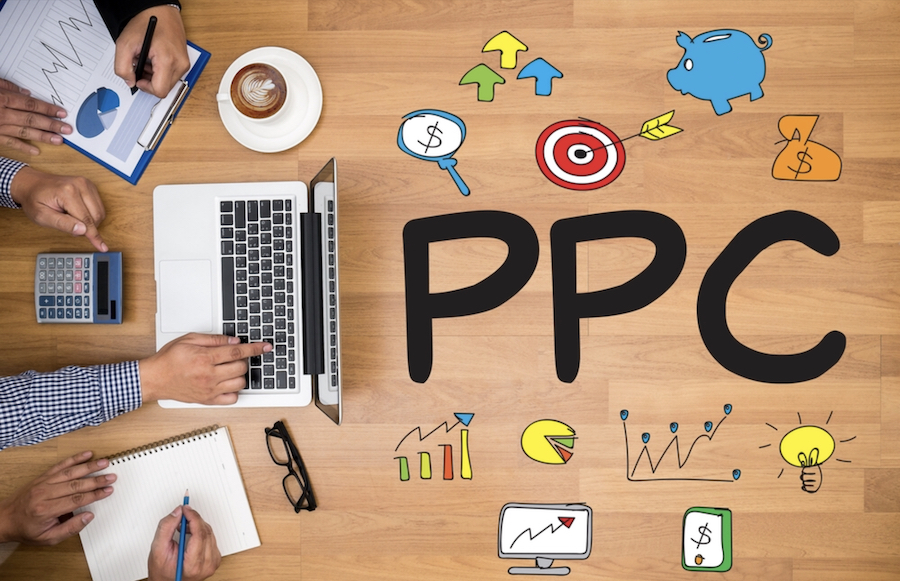What does PPC have to do with website design?

If you’re relatively new to PPC, you might not think much about website design.
Instead, your focus is more likely on things such as ad groups, ad messaging, and conversion tracking.
After all, what does the design of your website have to do with PPC performance anyway?
Quite a lot, actually.
It isn’t just about how your website looks.
It’s also about performance.
While getting qualified users to click on your ads is a crucial first step in any paid search program, everything that happens after that click is equally important.
And if users don’t like what they see or experience when they’re on your site or landing pages, then your PPC campaign performance will suffer.
This post will outline just some of the ways your website design can impact your PPC program.
1. Responsiveness
We live in a mobile world. Whereas people might have saved some online activities (such as shopping) for their laptop or desktops just a few years ago, today more of these activities are being conducted on mobile devices, such as tablets and phones.
The percentage mix of mobile versus desktop visitors varies. But even B2B businesses (often the last holdout for “people don’t visit our site on mobile” type thinking) are seeing more mobile visitors.
It used to be that having a mobile-friendly website was the gold standard for mobile usability. But not anymore.
Today, visitors want and expect a responsive site. Unlike mobile-friendly sites, the content on responsive websites is dynamic.
Images and content blocks can reposition themselves on the page, depending on the screen size on which they are viewed. In this way, they’re easier to view and navigate.
When your website isn’t responsive, usability is negatively impacted. And when usability is poor, users are more likely to get frustrated and go elsewhere.
And all that hard work you put into your ad campaign goes to waste.
2. Page Speed
Page speed is another design-related factor that can have a big impact on your PPC program.
A recent Search Engine Journal article stated that nearly 70 percent of consumers say page speed impacts their purchasing decisions.
The Unbounce study cited in the article found that a stunning 50 percent of visitors will leave a site if they’re forced to wait more than three seconds!
So even if your site looks amazing, if it doesn’t load quickly you have a problem.
Page speed is something we assess when designing paid search campaigns. And sometimes, clients are shocked at what we find.
These aren’t “homemade” websites either. They’re professionally developed – but that’s no guarantee that pages will load quickly.
We tested one client site, for example, and found that their mobile score was two on a scale of 100 (with 100 being fastest and zero slowest)!
As you can imagine, our client wasn’t happy with their developer.
You don’t have to wait for someone to do this testing for you. It’s simple to do yourself.
Google provides a tool for testing mobile site speed.
And another tool for testing desktop and mobile site speed.
3. Technical Errors
Another common issue with websites is technical errors.
Your site might work just fine for you and your staff. But then again, you’re probably performing the same set of actions with the same browser every time.
Potential customers, in contrast, might perform different functions that generate technical errors.
So if site visitors ever complain that some element of your site isn’t working, take note!
Even if you test the element and it works fine for you, don’t assume it’s problem solved. Keep trying to see if you can recreate the error. Talk to your developer.
Unfortunately, it’s not enough to find a workaround. You can’t say, “Actually, it works if you click on this link, not this one,” and leave it at that.
Because that’s a sure-fire way to lose your online advertising leads.
4. Aesthetics
In addition to the technical elements of website design, aesthetics are also important.
By aesthetics, I don’t mean the shade of blue used in your template. I mean overall impression.
When a site looks “homemade” or dated, it calls into question the trustworthiness and credibility of your business.
This is especially true when it’s the first time a potential customer interacts with your business.
Just as in face-to-face relations, a bad first impression can be difficult to overcome online. This can undermine your PPC efforts.
5. Conflicting Objectives
As your business changes and grows, it’s not uncommon to add more content, pages, and functions to your website.
Over time, you can start to lose sight of your website’s primary objective.
Is the goal to:
- Get visitors to buy?
- Get qualified visitors to call, email or fill out a contact form?
- Send them to other resources on your site?
- Subscribe to your newsletter?
If you’re not careful, some of these objectives can start to work against each other.
And these can undermine your PPC program.
6. Internal Logic & Structure
In addition to consistent objectives, you also want your site to have consistent logic and structure.
As with technical errors, your site might seem perfectly organized to you. You can always find what you’re looking for!
But if online visitors complain that they can’t find what they need, then that’s a serious problem.
For example, we had one client where we consistently struggled to find the information we needed on their site.
Inevitably, we’d have to call them for help. They’d then send us the URL or help us navigate to the right spot.
This was time-consuming and annoying for us. Imagine how frustrated visitors must feel!
Get a Third-Party Assessment
Unfortunately, it’s hard to accurately assess your own website. You’re too close to it.
That’s why it’s helpful to have someone else audit your website for you. How easily can they navigate your site, find what they’re looking for and perform different actions?
That kind of testing will give you a more accurate picture of potential website design issues.
A Great Website Is Crucial to Great PPC
When you’re new to PPC, it’s easy to get caught up in the minutia of putting together a PPC program.
But before you put too much time into it, make sure issues with your website won’t undermine your efforts.
Because a great website – one that’s current, functional, easy to use and logically organized – is critical to your PPC success.
___
by Pauline Jakober
source: SEJ

